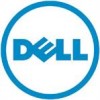Dell External OEMR 1435 User Guide - Page 42
Basic configuration, step 7 to a CD and make it bootable.
 |
View all Dell External OEMR 1435 manuals
Add to My Manuals
Save this manual to your list of manuals |
Page 42 highlights
6 In /mnt/cdrom/isolinux.cfg, the cd install section points to your customized start-up script. NOTE: The scripts that you copy into the CD will be copied to and run from the RAM disk. This task is done to ensure the CD is not locked. Ensure that your sample scripts have valid path names. 7 Copy the directory structure created in your work station, into the root folder that you created in "step 4". 8 This folder contains the DTK CD files necessary for operating system installation, and files required for replication. 9 Use the isolinux utility to burn the contents of the folder you created in "step 7" to a CD and make it bootable. 10 Your ISO image is ready for booting. Basic configuration Before you can use the BMC Management Utility to remotely manage the BMC on a managed system, you must perform some basic configuration tasks. The Deployment Toolkit SYSCFG utility provides a powerful command-line interface for performing the following configuration tasks: • Configuring BMC users for the managed system • Configuring the BMC IP address for IPMI LAN access and SOL access for the managed system • Configuring the BMC serial channel for IPMI serial access for the managed system NOTE: See the Deployment Toolkit User's Guide for additional information about installing and using the Deployment Toolkit utilities, and the Command Line Interface Reference Guide for a complete list of valid options, suboptions, and arguments for using the SYSCFG utility to configure and manage your BMC. 42 Configuring Your Managed System















